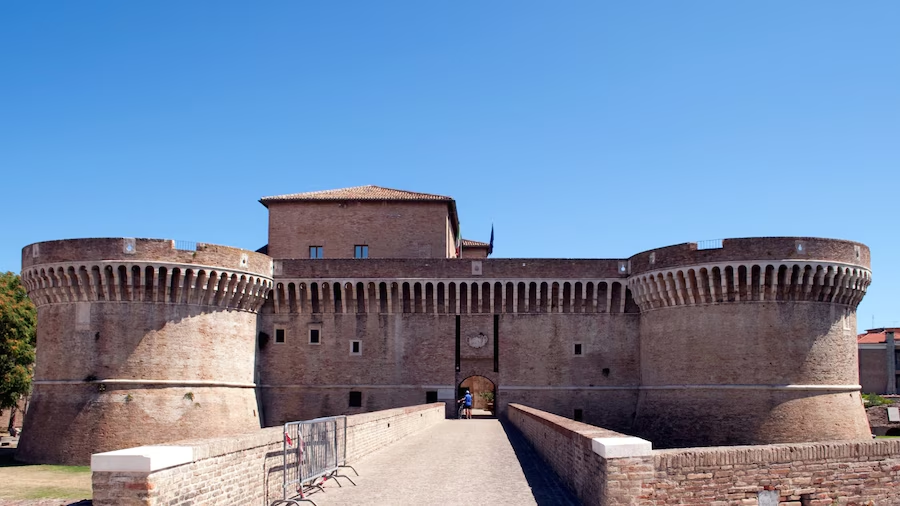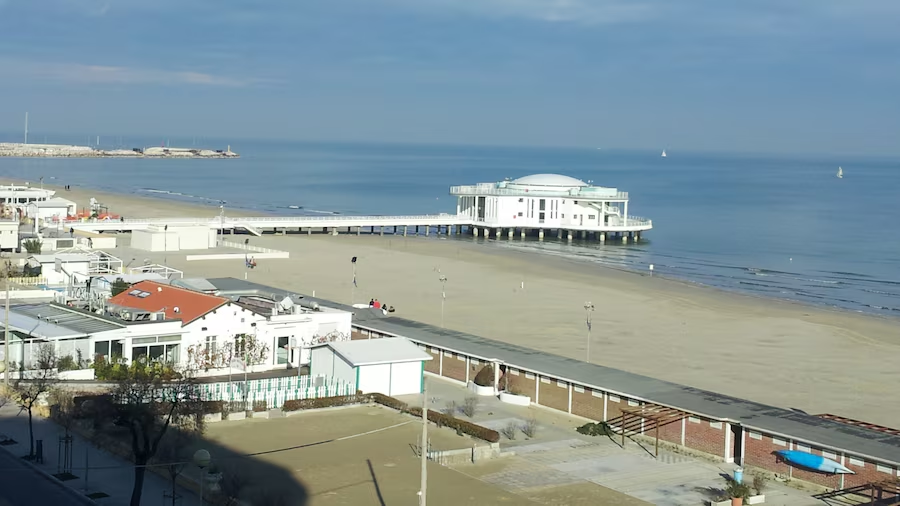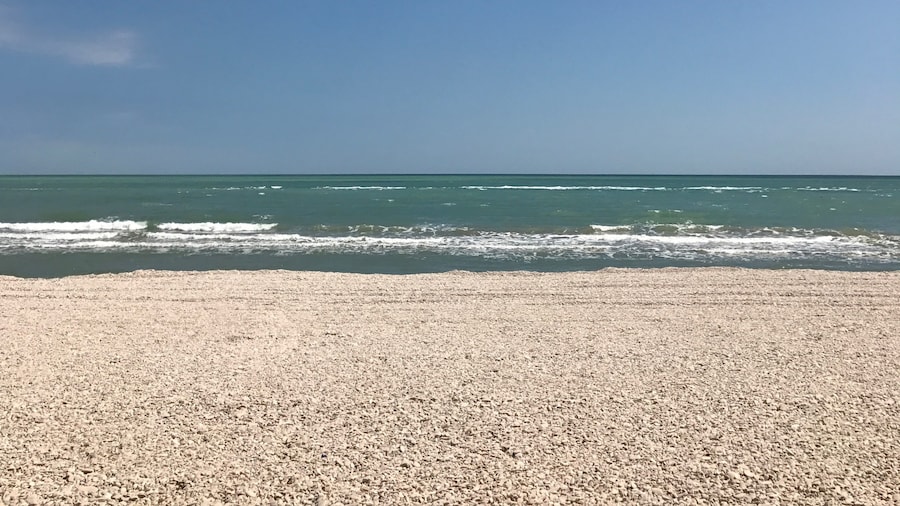The Borgia family plotted coups from this 15th-century fortress. It’s now a museum, whose empty moat is a cultural space for the city.
With its crenelated towers, the Rocca Roveresca di Senigallia is a formidable structure. Founded on top of an ancient Roman defensive structure, the castle grew into its current form over the course of the 1400s, when it was embroiled in the wars between Italian city-states, before being conquered by the infamous Cesare Borgia in 1503. Stare at the high walls and imagine the sight of defenders in flamboyant costumes leaning over the edge, ready to protect the town.
Spot the Rocca on the train into Senigalla and walk the few minutes to it from the center of town. Cross the masonry bridge built to replace an earlier drawbridge. Cultural events and festivals often take place inside the moat. At the top of the walls, spot the white stone decoration, engraved with “IO DUX - IO PRE,” an homage to the noble families that once controlled the armies ensconced here. Pass through the entrance inside the exterior walls, built by Baccio Pontelli, one of the age’s most famous military architects.
Near the entrance, see what is left of the Roman foundation. Notice the Rochetta, or small castle, the remains of the earlier structure that was replaced by the Rocca. Tour the Rocca itself, starting in the stately residential apartments used as a ducal residence until the fortress was returned to the church in 1631. Climb to the top for a view out over the sea.
The Rocca Roveresca di Senigalla is the city’s main landmark, easy to spot from all over town. Walk here in 4 minutes from the train station or in about 8 minutes from the beach. Train connections from the station are available to nearby cities and on to the rest of the country. If you drive, use metered parking very close to the castle. The castle is open for visitors daily from morning to mid-evening and has a small entrance fee.
Audio guides are available in English, as well as other languages. Most exhibits also feature English-language informational plaques.











